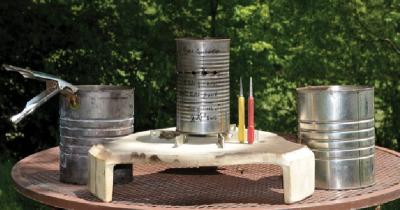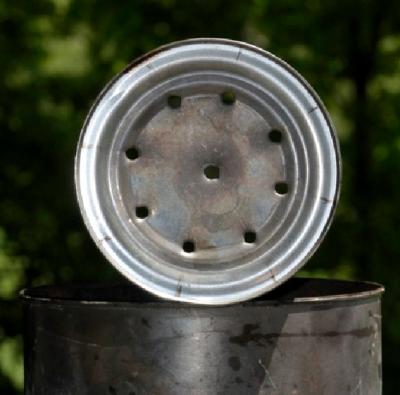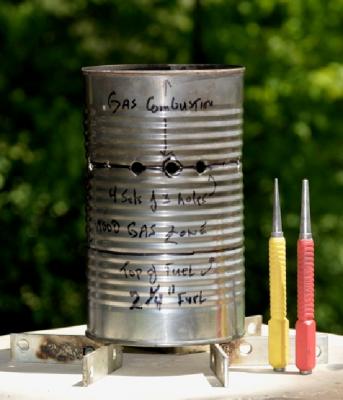Jock Gill, May 2010
With one can: I can make a stove I can cook a meal I can make biochar I can be carbon negative I can start to change the world
 This iCan is made from a 7" tall pineapple juice can
This iCan is made from a 7" tall pineapple juice can
I took a 7" tall pineapple juice can, removed the contents, and then marked it thusly:
1. A line around the can 1/3 from the bottom --- this is the top of the fuel load
2. A line around the can 1/3 from the top -- this is the line for the secondary air holes
The middle section is for the wood gas buffer to insure pyrolysis, not combustion.
Next
 Primary air supply for a 7" tall pineapple juice can
Primary air supply for a 7" tall pineapple juice can
Marked the bottom of the can off into 8 equal sections. I then used a nail set to make 8 equally spaced holes about half way between the outside of the can and its center. I made a 9th hole in the center. Not too big -- about 1/2 way down the small nail set shaft.

Then I used the line1/3 down from the top to locate the secondary air holes.
I made 8 equally spaced holes with the small nail punch and then used the the biggest punch to enlarge the holes to the full width of its shaft.
At this point I removed the top of the can completely. I left it on for the best structural integrity while I was punching holes.
Done. The All-in-One TLUD is complete. Very simple. Just 17 holes in the right places in one can.
More pictures, are also available at: http://www.flickr.com/photos/jockgill/sets/72157624142002304/
and click here for more story details: http://www.bioenergylists.org/node/2827
